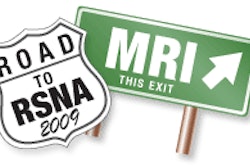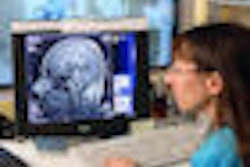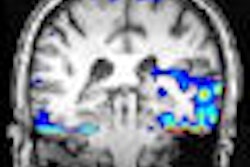Wednesday, December 2 | 3:30 p.m.-3:40 p.m. | SSM13-04 | Room E451B
While it is not the modality of choice, MRI can help provide the diagnosis for deep plantar thrombophlebitis in patients with plantar pain, according to this Wednesday afternoon scientific session presentation."The imaging modality of choice is Doppler ultrasound," said co-author Dr. Frederico Miranda from the diagnostic imaging department at Albert Einstein Hospital in São Paulo, Brazil. "However MRI, is the modality of choice when the suspicions include any differential diagnosis for foot pain including Morton's neuroma, plantar fasciitis, intermetatarsal bursitis, tendon pathology, and stress fractures."
Researchers reviewed 12 MR examinations of patients with plantar foot pain with findings consistent with plantar thrombophlebitis. Six of the 12 patients also received color Doppler ultrasound exams. MRI findings included perivascular edema, increase in the diameter of the vessel, perivascular enhancement, and absence of intraluminal enhancement.
The retrospective analysis found that MRI demonstrated high signal on T2-weighted images in the perivenular tissue in all 12 patients, and an increase in vessel diameter in nine cases. Among the six patients who received intravenous contrast media, MRI detected enlarged perivascular soft tissue and a defect in the vessel in all six cases.
The results from the color Doppler scans included affected vessel ectasia, absence of vascular flow, and decreased compressibility.
"The use of intravenous contrast can increase the sensitivity, demonstrating thrombus within the affected veins, with enhancement of the surrounding tissues," Miranda said. "Thus, we believe that with the knowledge of the pathology and the experience with its direct and indirect signals, [deep plantar thrombophlebitis] can become increasingly recognized."
Although deep plantar thrombophlebitis is considered a benign condition, Miranda noted that there is a high frequency of thromboembolic complications and stressed the need for a fast diagnosis and more comprehensive treatment to avoid possible complications.
Miranda collaborated on the study with Dr. Carlos Longo, a musculoskeletal radiologist at the same facility.


.fFmgij6Hin.png?auto=compress%2Cformat&fit=crop&h=100&q=70&w=100)





.fFmgij6Hin.png?auto=compress%2Cformat&fit=crop&h=167&q=70&w=250)











